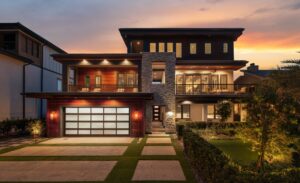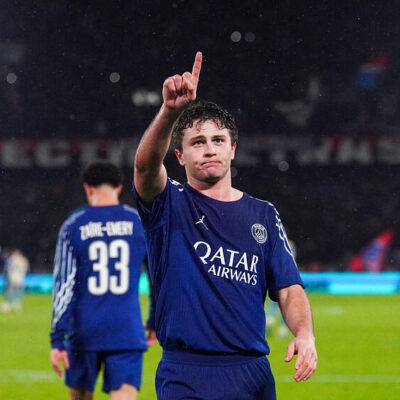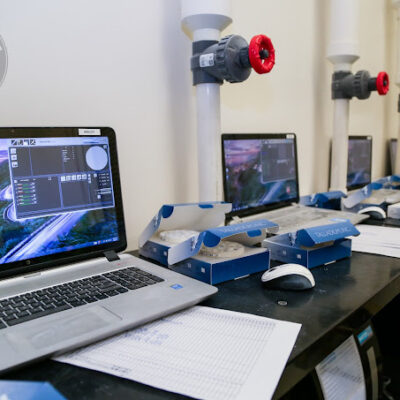In the world of real estate photography, creating the illusion of space is essential—especially when working with small rooms. For professionals such as an Orange County real estate photographer, mastering this illusion can significantly impact a property’s presentation and perceived value. One of the most effective tools to achieve this visual trick is the strategic use of mirrors. When placed correctly and used creatively, mirrors can open up a space, enhance lighting, and guide the viewer’s eye, all through a single frame.
This article explores how to use mirrors to make small spaces appear larger in real estate photography. Whether you’re a seasoned professional or a DIY enthusiast photographing your own property, these tips will help you capture stunning, expansive-looking interiors.
The Psychology of Mirrors in Photography
Mirrors work as powerful visual tools in photography because they reflect both light and space. When used thoughtfully, they can make a room appear to extend beyond its actual boundaries. This creates a psychological effect for viewers—what they see feels open, airy, and inviting, even if the room is modest in size.
In real estate photography, where first impressions matter more than ever, this psychological shift can help turn a potential buyer’s “maybe” into a “yes.” An Orange County real estate photographer understands that the perceived spaciousness of a room can influence a buyer’s perception of value and comfort.
Choosing the Right Mirrors
Not all mirrors are created equal, especially in real estate photography. The type, size, shape, and frame of a mirror can all impact the overall aesthetic of a photo. Larger mirrors tend to reflect more light and space, making them ideal for rooms that are especially tight or dark.
Frameless mirrors or those with minimalistic frames are preferred when the goal is to maximize spaciousness. Ornate frames can be beautiful but may become a distraction or make the mirror feel more like a decorative element than a tool for expanding the visual field.
An Orange County real estate photographer often opts for clean lines and simple designs to keep the focus on the space rather than the object itself. Oversized mirrors in living rooms, bedrooms, and hallways are especially effective.
Ideal Mirror Placement to Enhance Space
Strategic mirror placement is critical to ensuring the desired visual effect. Poor placement can create confusion in the image or distort the room’s proportions. Here are the best placements for mirrors to enhance space in photography:
1. Opposite Windows:
Positioning a mirror directly across from a window will reflect natural light into the room. This not only brightens the space but also adds an illusion of depth, making the area look larger and more open. This is particularly helpful in smaller bedrooms or tight living areas.
2. Adjacent to Light Sources:
Mirrors placed near lamps, sconces, or pendant lights can reflect artificial lighting, helping eliminate dark corners and spreading light throughout the room. This creates a more balanced exposure in photos, which is essential for high-quality real estate imagery.
3. Behind Furniture:
Placing mirrors behind key furniture pieces like a sofa, console table, or bed can create a sense of continuity. It gives the impression that the room extends beyond its physical limits. This trick works especially well in narrow living spaces or compact dining rooms.
4. End of a Hallway:
A mirror placed at the end of a hallway can make the corridor feel less claustrophobic. It adds depth to the visual field and creates a sense of symmetry, which is aesthetically pleasing in photographs.
5. In Small Bathrooms:
Bathrooms are notoriously challenging in real estate photography due to their limited space. A large mirror above the vanity can double the visual area of the room and reflect both lighting and design elements, making the bathroom appear more luxurious and spacious.
Avoiding Common Mirror Photography Pitfalls
While mirrors can enhance a space when used correctly, they also present several challenges in photography. One of the biggest issues is the potential for unwanted reflections—photographers, cameras, tripods, or even clutter can accidentally be captured in the mirror’s surface.
To avoid this, an experienced Orange County real estate photographer takes time to plan each shot carefully. This might involve adjusting angles, using a tripod with a remote shutter, or even removing certain reflections in post-processing.
Another common mistake is using too many mirrors in a single space. This can create visual confusion and make the room appear chaotic. Instead, focus on one or two well-placed mirrors that contribute to the overall composition without overwhelming it.
Lighting Techniques in Mirror Photography
Lighting plays a crucial role in how mirrors affect a room’s appearance. Natural light is always preferred for real estate photography, but artificial lighting can be used effectively when daylight is limited.
When incorporating mirrors, the lighting setup should be balanced to prevent harsh glare or hotspots. Soft, diffused lighting helps eliminate unwanted reflections and shadows. An Orange County real estate photographer often uses softboxes or umbrella lights to create this effect.
Photographers should also be mindful of color temperature. Warm lighting reflected in a mirror can make the room feel cozy, while cooler tones can give it a more modern and crisp appearance. Consistency in lighting temperature helps maintain a cohesive look throughout the home.

Mirror Styles That Complement Real Estate Photography
The mirror style should match the interior’s overall design. For example, a sleek, frameless mirror works well in modern homes, while a rustic wooden-framed mirror may suit a farmhouse or coastal-style property.
An Orange County real estate photographer may collaborate with staging professionals to ensure the mirror style enhances the space rather than detracting from it. Matching the mirror’s aesthetic to the home’s design helps create a harmonious visual flow throughout the photo set.
Here are a few styles that photograph particularly well:
-
Floor-Length Mirrors: These are ideal for bedrooms and living rooms. They elongate the space and often capture beautiful reflections of other design elements.
-
Round Mirrors: Best used in bathrooms or entryways, round mirrors soften the visual edges of a room, adding elegance and a sense of flow.
-
Panel Mirrors: These segmented mirrors can mimic the look of windows, creating the illusion of architectural detail and increasing perceived openness.
Creating Focal Points with Mirrors
Mirrors can also be used to create focal points within a room. By strategically capturing reflections of key design features—such as a chandelier, artwork, or a view from the window—you can guide the viewer’s eye and add depth to the photo.
This technique is useful in smaller rooms where it’s hard to show all elements in one frame. An Orange County real estate photographer might position the camera to show a fireplace directly and its reflection of a garden or open sky through the mirror, effectively presenting two features in a single image.
Post-Processing for Mirror Photography
After capturing the perfect shot, some adjustments in post-processing can enhance the effect of mirrors. This includes correcting color balance, removing distractions from reflections, and brightening dark areas. Subtle edits can make a significant difference in how the mirror enhances the perceived size of a room.
However, over-editing can result in an unnatural or overly staged look. It’s important to retain realism while maximizing appeal. A skilled Orange County real estate photographer knows how to balance these elements to produce compelling, trustworthy images that resonate with buyers.
Using Mirrors in Virtual Staging
In situations where physical staging isn’t possible, virtual staging can also incorporate mirrors to expand the visual space. Virtual mirrors should still follow the same placement and style guidelines used in real-life staging. When done correctly, this digital enhancement can be just as effective in creating spacious and inviting interiors.
Virtual mirrors are especially useful in empty rooms where the walls might otherwise appear bland or boxed in. Including a well-placed virtual mirror in these spaces helps define the room’s purpose and adds aesthetic interest.
Conclusion
Mirrors are one of the most underrated yet powerful tools in real estate photography. They not only enhance lighting and design but also dramatically affect how a space is perceived by potential buyers. Whether you’re photographing a compact studio apartment or a cozy cottage, thoughtful mirror placement can help you showcase the property in its best light.
An experienced Orange County real estate photographer knows how to blend technical skill with artistic vision, using mirrors to amplify space, elevate design, and draw in the viewer. In a competitive market, these subtle enhancements can make all the difference—turning a small space into a standout listing.





